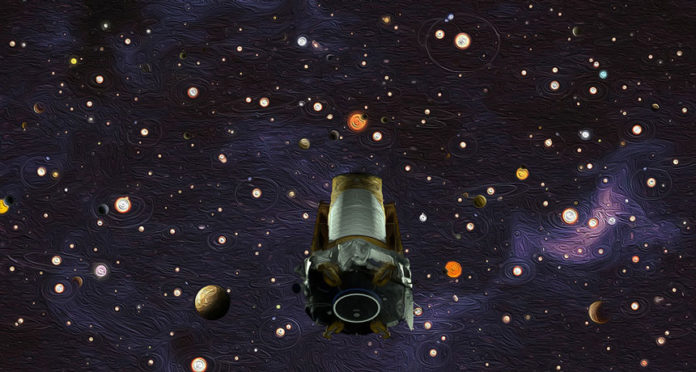Kepler discovered more than 2,600 planets outside our solar system.
This afternoon, NASA officially bid farewell to the Kepler Space Telescope, a pioneering spacecraft that helped discover thousands of planets beyond our Solar System. After years of service that extended long beyond its initial four-year mission, the spacecraft finally ran out of fuel.
Engineers realized that Kepler was almost out of fuel earlier this summer. At the time, they put it in safe mode for a brief time to focus on getting the scientific data that Kepler had already connected safely back to Earth. They managed to turn it on and collect more data, but they knew at the time that the spacecraft was nearing its end.
Now without fuel, NASA decided to officially retire the spacecraft. It’s currently in a safe orbit far from Earth. This week or next, the engineers will send a command to the spacecraft that will turn off its transmitter and other instruments, leaving it silent and drifting in its orbit.
Kepler launched in 2009 on a mission to find planets outside our Solar System called exoplanets. At the time, very few exoplanets had been detected, so the instrument was peering deep into the unknown. When it launched, Kepler was a marvel of scientific engineering. It detected planets by looking for their transits, which are the small dips in the light of a star as a planet passes between that star and the Earth.
In its first few years of operation, Kepler was wildly successful. It looked for planets in a particular segment of the sky, monitoring about 150,000 stars for transits. But in 2012, some of the equipment on the spacecraft that kept it steady malfunctioned. The next year, the situation worsened, and researchers feared that it was the end of the road for the spacecraft. But later in 2013, engineers came up with a solution, using the pressure of sunlight to balance the spacecraft. Using the Sun, they could keep the spacecraft steady for 83 days at a time. The development let NASA start a new mission with the spacecraft, which it called K2.
Kepler and K2 helped researchers discover that planets are incredibly common, even more common than stars. Together, the missions discovered and confirmed the existence of 2,681 planets and identified many more blips around distant stars that could be planets but are still awaiting confirmation. Many of those worlds are somewhere between the size of the Earth and Neptune, which is unlike any seen in our Solar System.



















































